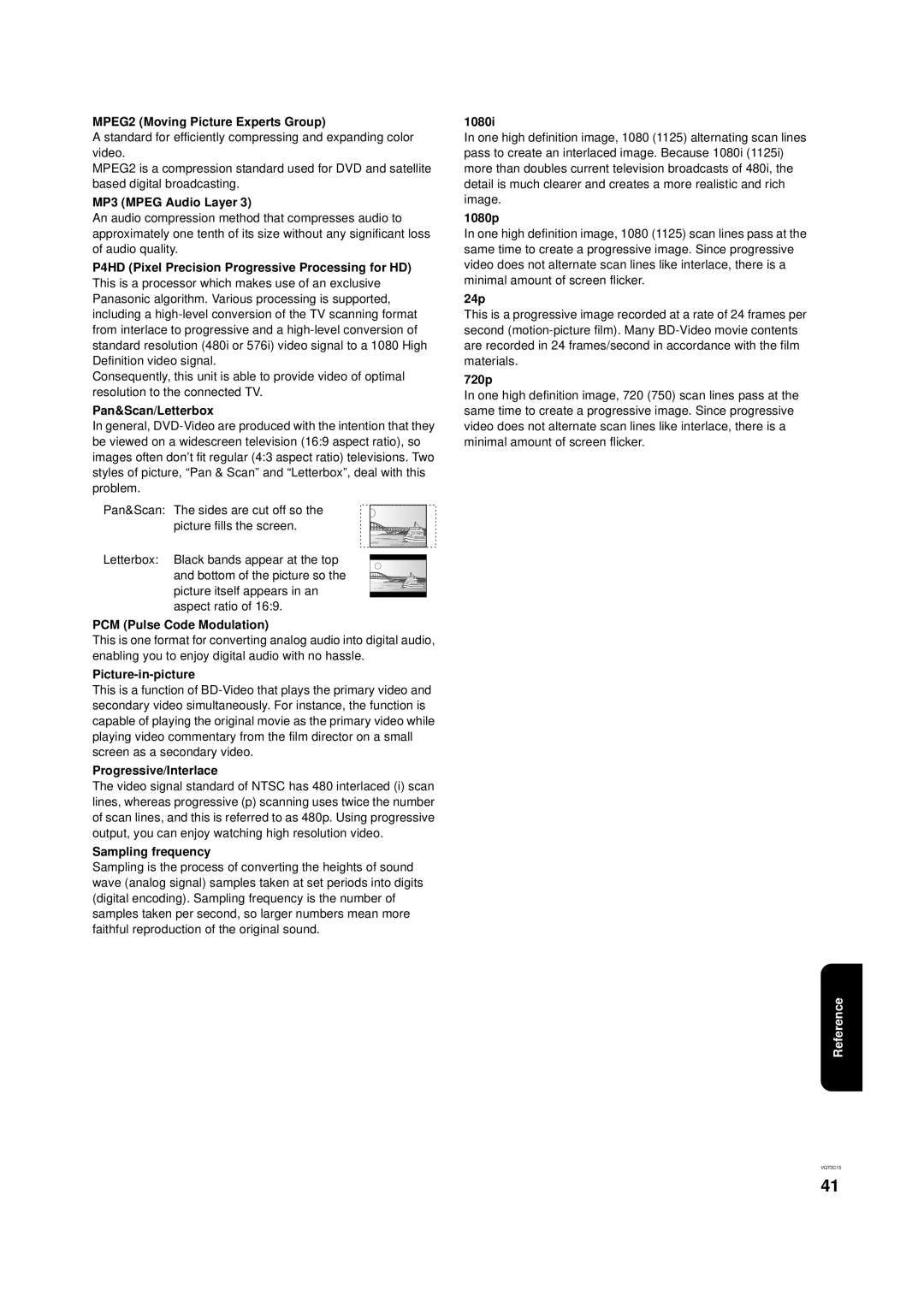
MPEG2 (Moving Picture Experts Group)
A standard for efficiently compressing and expanding color video.
MPEG2 is a compression standard used for DVD and satellite based digital broadcasting.
MP3 (MPEG Audio Layer 3)
An audio compression method that compresses audio to approximately one tenth of its size without any significant loss of audio quality.
P4HD (Pixel Precision Progressive Processing for HD) This is a processor which makes use of an exclusive Panasonic algorithm. Various processing is supported, including a
Consequently, this unit is able to provide video of optimal resolution to the connected TV.
Pan&Scan/Letterbox
In general,
Pan&Scan: The sides are cut off so the picture fills the screen.
Letterbox: Black bands appear at the top and bottom of the picture so the picture itself appears in an aspect ratio of 16:9.
PCM (Pulse Code Modulation)
This is one format for converting analog audio into digital audio, enabling you to enjoy digital audio with no hassle.
Picture-in-picture
This is a function of
Progressive/Interlace
The video signal standard of NTSC has 480 interlaced (i) scan lines, whereas progressive (p) scanning uses twice the number of scan lines, and this is referred to as 480p. Using progressive output, you can enjoy watching high resolution video.
Sampling frequency
Sampling is the process of converting the heights of sound wave (analog signal) samples taken at set periods into digits (digital encoding). Sampling frequency is the number of samples taken per second, so larger numbers mean more faithful reproduction of the original sound.
1080i
In one high definition image, 1080 (1125) alternating scan lines pass to create an interlaced image. Because 1080i (1125i) more than doubles current television broadcasts of 480i, the detail is much clearer and creates a more realistic and rich image.
1080p
In one high definition image, 1080 (1125) scan lines pass at the same time to create a progressive image. Since progressive video does not alternate scan lines like interlace, there is a minimal amount of screen flicker.
24p
This is a progressive image recorded at a rate of 24 frames per second
720p
In one high definition image, 720 (750) scan lines pass at the same time to create a progressive image. Since progressive video does not alternate scan lines like interlace, there is a minimal amount of screen flicker.
Reference
VQT3C15
41
